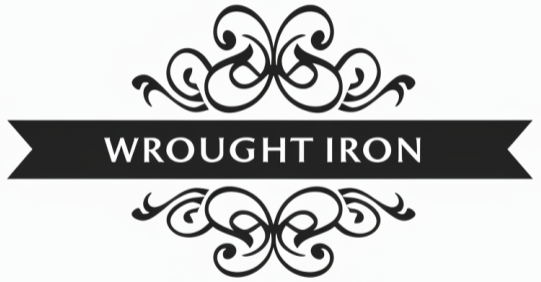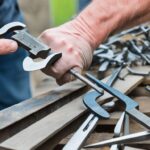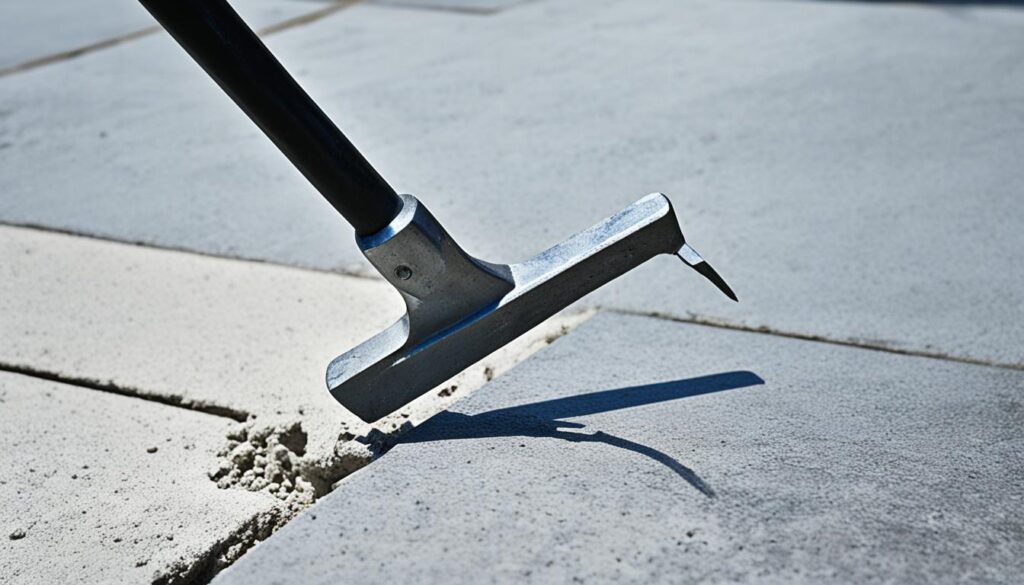
Ever thought about taking out that old wrought iron railing from your concrete? You might be surprised how easy it is. Whether you’re changing your home’s look or fixing safety concerns, learning to remove this kind of railing can be simple. Even those without much experience can do it well. This guide will take you through it step by step, making sure you stay safe and get it done right.
Key Takeaways
- Understand the reasons for removing wrought iron railings, including safety, aesthetics, and material deterioration.
- Identify and gather necessary tools and materials for the job, including hand tools and safety equipment.
- Learn the step-by-step process to prepare your work area and safely remove fasteners.
- Explore methods for handling stubborn railings that resist removal.
- Know how to properly clean and patch any holes left in the concrete after removal.
- Discover the right way to dispose of old wrought iron railings to avoid any hassle.
- Utilize Pro Junk Dispatch services in cities like Miami, Jacksonville, and Tampa for professional assistance1.
Why Remove Wrought Iron Railings?
Homeowners might need to remove wrought iron railings for several reasons. These include safety risks, looks that don’t fit, and the railings getting old. Knowing these reasons helps people decide to take them down. This way, they can prevent any danger while doing so.
Safety Concerns
Over time, outdoor iron railings can rust because of the weather2. This rust makes them weak, so they can be dangerous if someone leans on them. Many times, people take them down to avoid anyone getting hurt1. It’s very important to deal with these risks to keep everyone safe.
Aesthetic Reasons
Iron railings add value and beauty to a house2. But sometimes, they don’t look good with changes made to the home. This means they may have to be removed. There are many designs available for iron railings. So, they can match almost any style2. It’s key to pick a design that flows well with the rest of the house.
Material Deterioration
In damp areas, iron railings can easily rust1. This rust makes them weaker and not look as good. When this happens, it’s time to replace them. Replacing the railings includes a few steps like cutting and drilling2. After putting the new ones in, cleaning the cement off is important to leave things looking nice2.
Thinking about the safety, looks, and the condition of the railings is vital when considering taking them down. By taking action on these points, homeowners can have a smooth removal process. This can also improve how their home looks and keep it safe.
Necessary Tools and Materials
To take down iron railings, you need the right hand tools and safety gear. This ensures it’s done safely and smoothly. Being well-prepared is essential for a quick and effective job.
Hand Tools
When removing iron fixtures, some key hand tools are vital. A drill-driver lets you take out screws using different heads1. Use pry bars and hammers to get the railing off the concrete1. You might also need a reciprocating saw and a hammer drill. They’re good for cutting through metal and masonry2.
Safety Equipment
Staying safe is the most important thing when dealing with iron railings. Wear tough gloves and eye protection to prevent accidents1. If tools like an oxyacetylene torch are involved, use a welding helmet and leather gear for protection against burns and sparks3. Always use wrap-around eye protection with a hacksaw or grinder3.
Additional Materials
Having extra materials can make railing removal easier. Use drop cloths to keep the area clean and protect it from debris. Plastic bags work well for getting rid of old parts1. Keep a full ABC fire extinguisher close if using torches or grinders3. It’s also smart to arrange for junk removal for the old railing1.
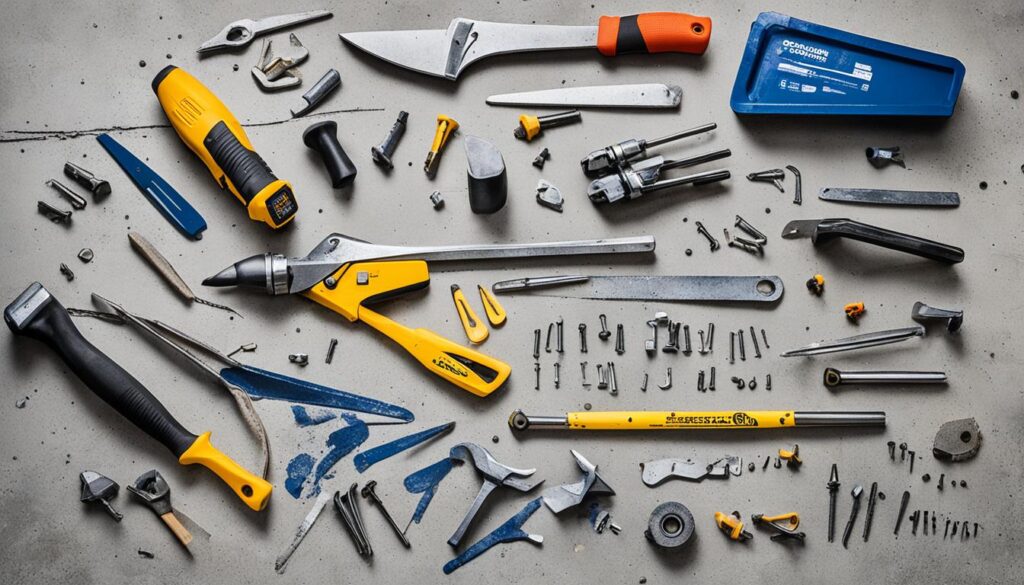
Preparing the Work Area
Before you start, clear the space around the railings. Move furniture and other items away from the stairs and porches. This makes sure you have plenty of room to work.
Use drop cloths to cover the area. They’ll catch any mess or tools that might damage the floor. Plus, they help prevent trips on floor clutter.
Online, 44,000 people checked out tips on removing railings from concrete4. Drop cloths are a must for keeping areas clean. Using a vacuum is also smart to avoid a messy workspace4.
“Use epoxy anchor mix or Quikrete Anchoring Cement for repairs,” one participant suggested for strong fixes4.
Good lighting is critical for a smooth and safe job. Dark areas can cause errors or accidents. So, ensure your workspace is brightly lit.
For warm days, use chemical strippers for paint removal5. After stripping, cover the area with plastic wrap right away. This keeps solvents from evaporating too fast, allowing them to work longer5.
Thorough prep work is key for an easy railing removal. It minimizes damage risk and boosts your work’s effectiveness.
Identify and Remove Fasteners
First, let’s understand the need to spot and take out the right fasteners before tackling removing a wrought iron railing from concrete. This is crucial for safety and keeping everything in good shape.
Locating Fasteners
Fasteners on metal railings are mostly screws and bolts. It’s important to check everywhere6. Sometimes, they get old and hard to remove1. If your railing is loose, check those spots first. Tightening or replacing fasteners can help6. Changing a bolt or using a bigger screw for wood can fix the problem6. This is an easy way to make sure it all holds well without a lot of work.
Using the Right Tools
It’s critical to use the right tools for extracting fasteners. Wrong tools could damage the railing or make your job harder. Fasteners in concrete need to be removed with tools like a drill-driver6. Each type of fastener needs a specific method:
- Wedge Anchors: Drill a hole twice as long as the anchor to pull it out easily7.
- Sleeve Anchors: You might have to create a hole 2 times the length of the anchor, and sometimes trim the protruding part to take it out7.
- Hammer Drive Anchors: They have heads that are hard to tamper with, so you may have to remove them by cutting the head off7.
For rusty fasteners, using WD-40 or similar oil can make them easier to turn6. Also, remember to keep a bag to collect all used fasteners. This makes your area safer and cleaner.
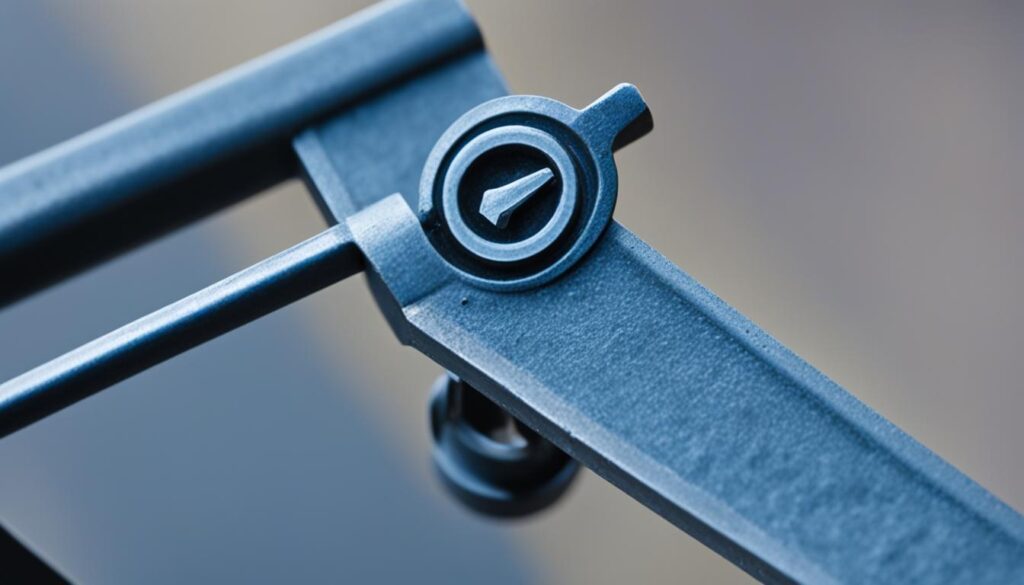
How to Remove Wrought Iron Railing from Concrete
Outdoor wrought iron railings are a beautiful addition. They make porches and stairs safer and look nice1. But, because they’re outside, they can rust and need to be changed2. Here’s an easy guide on taking them out of concrete. This method works well for anchored railings.
Start by gathering tools and safety gear. You’ll use a reciprocating saw, hammer drill, and other items listed21. First, find and take out the nails holding the railing. For old railings, you may need a lot of force to get them off1.
Steps to Remove Wrought Iron Railing:
- Always wear gloves and eye protection.
- Cut the railings with the saw where they are rusty2.
- Next, use the drill to remove any left parts2.
- To lift a railing stuck in concrete, carefully pry it out1.
- Before anything else, clean the holes by vacuuming4.
Disposing of the old iron might be hard because of its paint. It could be lead-based. Getting help from a junk removal service is often a good idea1. After taking out the old railing, plug the holes. This makes room for a new railing and makes your home look better2.
Dealing with Stubborn Railings
Let’s face it, not all railings are easy to remove. Sometimes, they just won’t move. Swapping a hammer for a trusty pry bar can make all the difference.
Using a Pry Bar
Using a pry bar is all about skill and force. Slide the pry bar’s flat end between the railing and the floor. Push smoothly and slowly until it starts to loosen. This works well for really old railings, especially if they’re painted with lead paint. This makes the job tougher8. A helpful forum had over 16K viewers, sharing tips9. For safety with old railings, wear the right protection, like the EPA suggests8.

Alternative Methods
If the pry bar isn’t working, it’s time for plan B. Try cutting, drilling, welding, or using special equipment. Many DIYers share advice online, like using cutting and epoxy. For tough rust or wear, try precision drilling and fitting new parts. Whether it’s salt damage or just age, the key is to stay patient and have the right tools.
Filling and Patching Holes
After taking out the wrought iron railing, you often face the leftover holes in the concrete. It’s key to fill and patch these holes well. This ensures the area stays strong and looks smooth.
Cleaning and Preparing Holes
Start the repair by making sure the holes are clean. Get rid of any loose stuff with a vacuum or stiff-bristle brush. If there’s rust from old posts, scrub it off with a wire brush. This step stops more rust and makes sure the cement sticks well10.
Clean holes mean the repair will bond correctly.
Applying Hydraulic Cement
Using hydraulic cement to fill the holes is a smart choice. It sticks well with concrete and hardens fast, in about 30 minutes. This gives you a quick and lasting repair10. Here’s what to do:
- Mixing the Cement: Always follow what the maker says to mix your hydraulic cement right.
- Filling the Holes: Use a strong trowel to fill the holes completely. Watch out for air pockets as they can make the repair weak.
- Finishing Touches: Finally, smooth the top with the trowel for a tidy look.
Using hydraulic cement guarantees your work will last long and stay strong. It’s a great solution, both for those new to fixing things and for experts. With the right way to do it and materials, mending concrete holes is easy and works well.
Disposing of Old Wrought Iron Railings
When you finish taking apart the wrought iron railings, the next step is getting rid of them the right way. Tossing them in the trash isn’t a good choice. Some railings might have lead paint, so you need to handle them with care.
One good idea is to upcycle the railings to save money. It’s much cheaper than buying new items for your home. If you’re not into upcycling, consider donating the railings. This can cut down waste by up to 60%, making a big difference for the planet.
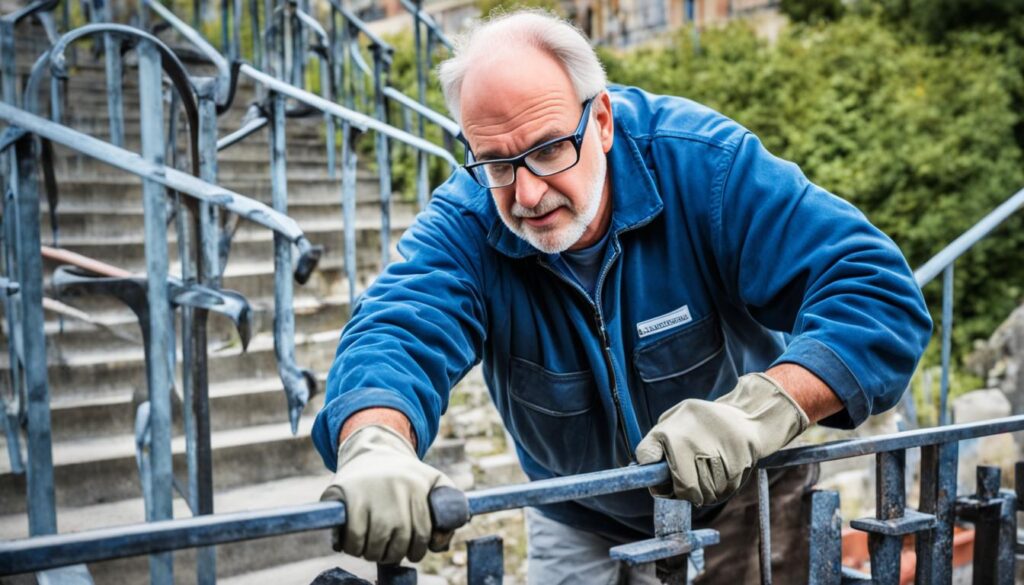
Alternatively, you can use a junk removal service for help. In Tampa, Florida, people find it much easier to dispose of their railings by using these services11. Professionals make sure the railings are taken care of properly. This avoids an 85% chance of causing damage if you do it without the right tools or experience11.
If you’re in the Chicagoland area and your home has spirals on the front porch, proper management can save you a lot of money. Dealing with it carefully can take less than two hours12. But remember, without care, the steel can start to rust within a day12.
Here are some common supplies to keep in mind for removing spirals from an old railing and preparing for proper disposal:
- Side grinder
- Face shield
- Gloves
- Hammer
- Steel files
- Sander
- Rustoleum primer
- Rustoleum paint
- Paint brush
- Roller + sleeve
Remember, how you dispose of old wrought iron affects your safety, budget, and the environment. So, make the right choice between upcycling, donating, or hiring professionals. It ensures a sustainable and easy process.
Conclusion
Looking back on the process of removing railings, we see it was detailed but rewarding work. Safety, looks, and decay of the material were reasons we took them out. Fixing these issues help improve how your place looks and keeps it safe13. Having the right items and doing each step well are key to finishing this task14.
Don’t forget to get rid of the rust to keep your railings strong. Hard stuff like steel grit or crushed glass can help a lot14. Also, use oil on rusted parts to avoid problems when taking them off14. For tough rust, products like Naval Jelly work wonders14.
After removing the railings, make sure to trash the old ones right. You might also need to fill any holes to keep the ground nice. This work is more than just physical. It’s about feeling good when you see your place looking better. Enjoy the changes and the safety and style they bring1413.
FAQ
What are the main reasons for removing wrought iron railings from concrete?
What tools will I need for wrought iron railing removal?
How do I prepare the work area for railing removal?
How can I locate the fasteners that secure the railing to the concrete?
What techniques should I use to detach railings that have been in place for several years?
How should I fill and patch the holes left in the concrete after removing the railing?
What are the correct disposal methods for old wrought iron railings?
Source Links
- https://junkgarbageremoval.com/remove-wrought-iron-railings/ – How to Remove Wrought Iron Railings Pro Junk Dispatch
- https://www.naturalhandyman.com/iip/infrailing/infreplacemetalrailings.html – How to replace an outside iron railing set in cement
- https://www.hunker.com/12220399/what-is-the-best-way-to-cut-wrought-iron-railings – What Is the Best Way to Cut Wrought Iron Railings? | Hunker
- https://www.diychatroom.com/threads/re-anchoring-wrought-iron-railings.69401/ – Re-anchoring Wrought Iron Railings
- https://sawmillcreek.org/showthread.php?85806-Wrought-Iron-stripping – Wrought Iron stripping
- https://artisticalloys.com/2020/05/11/repairing-a-wrought-iron-railing/ – Repairing A Wrought Iron Railing – Artistic Alloys & Design, LLC.
- https://www.concretefasteners.com/diy-articles/how-to-remove-concrete-anchors/ – How to Remove Concrete Anchors
- https://florabrotherspainting.com/2023/04/06/how-to-clean-and-paint-wrought-iron-railing/ – How to Clean and Paint Wrought Iron Railing Easily
- https://www.diychatroom.com/threads/wrought-iron-rail-repair.711425/ – Wrought iron rail repair
- https://www.jb-customwelding.com/handrail_repair.html – handrail repair
- https://tampa.trashwizard.com/junk-removal/old-wrought-iron-railings/ – What to do with old wrought iron railing in 2023
- https://thediyplaybook.com/how-to-remove-spirals-on-railing/ – How To Remove Spirals On An Old Railing | The DIY Playbook
- https://homebestirondoors.com/wrought-iron-fences-safety-standard/ – Wrought Iron Fences: Safety Standard You Need To Know – Custom iron doors,wrought iron gates,iron fencing,iron railing and iron staircase
- https://gharpedia.com/blog/how-to-repair-rusted-railing-of-home/ – How to Repair Rusted Railing of Your Home?
